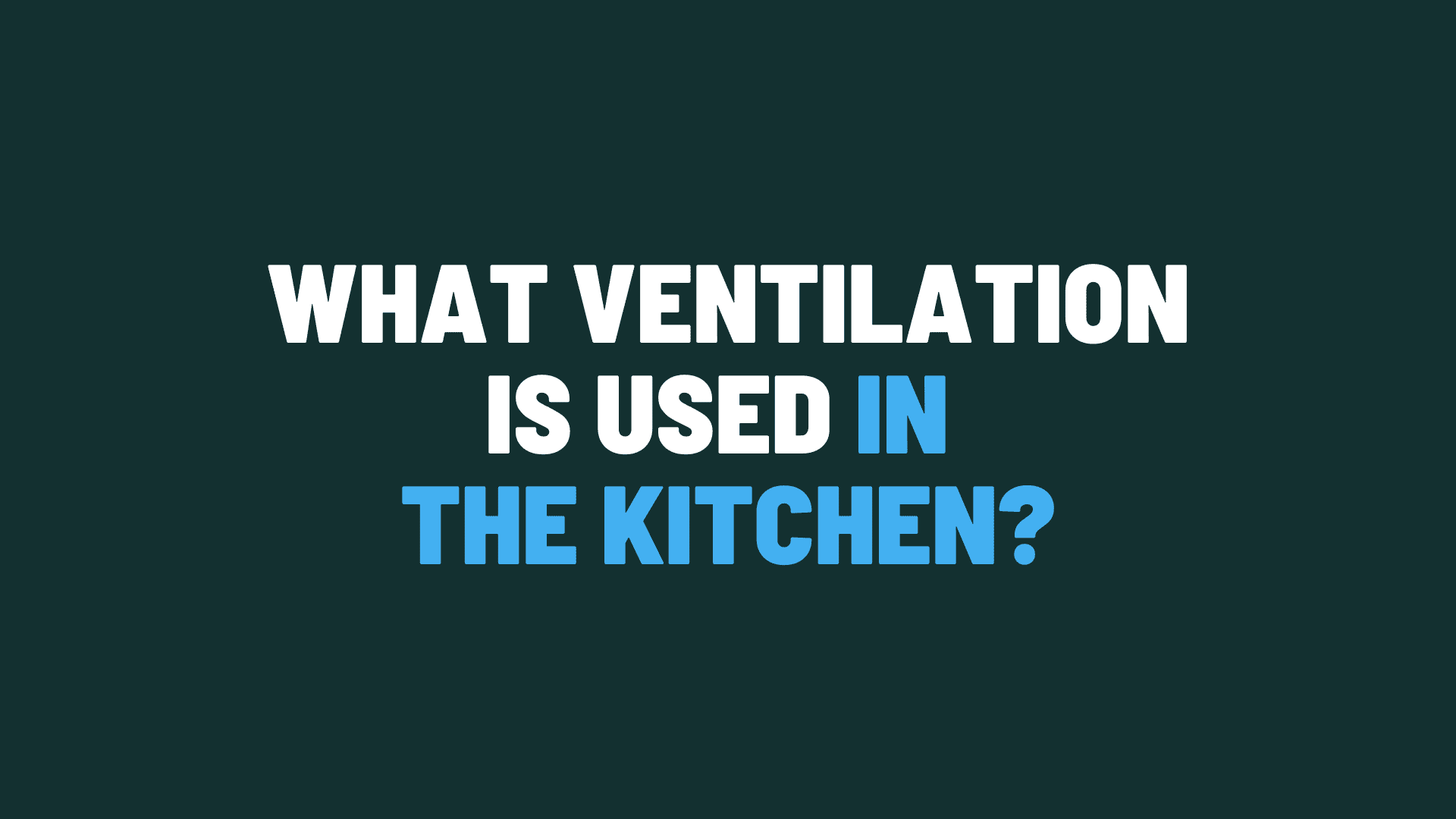
Question: What Ventilation is Used in the Kitchen?
Answer: Kitchen ventilation typically uses exhaust fans, range hoods, or downdraft systems to remove cooking fumes, grease, and excess heat, improving indoor air quality.
Kitchen Ventilation Explained
A well-ventilated kitchen improves air quality and comfort. This post explores common kitchen ventilation methods, helping you choose the best system for your needs.
Range Hoods: Removing Cooking Fumes
Range hoods sit above the stove, capturing smoke, grease, and odors. They use a fan to pull air through filters and exhaust it outside or recirculate it back into the kitchen. Effective range hood selection depends on cooking habits and stove type.
Ducted Range Hoods:
These hoods vent air outside, offering the best performance for removing smoke and odors.Ductless Range Hoods:
These hoods filter air and recirculate it indoors. They suit kitchens without exterior venting options.Under-Cabinet Hoods:
These compact hoods mount under cabinets, saving space.Wall-Mount Hoods:
These hoods mount directly to the wall, providing a focal point in the kitchen.Island Hoods:
These hoods hang from the ceiling above island cooktops.
Choosing the right range hood involves considering factors like cooking frequency, kitchen size, and budget. A professional can help determine the necessary airflow (CFM) and hood size for optimal performance.
Click here for more information on cabinet refinishing Toronto
Related Article: What is the Alternative To an Exhaust Fan in the Kitchen?
Related Article: What Ventilation is Required in a Kitchen?
Natural Ventilation: Utilizing Fresh Air
Natural ventilation utilizes open windows and doors to circulate fresh air. This method costs nothing to operate and can effectively reduce indoor air pollutants on milder days. Strategically placed windows and doors maximize airflow and cross-ventilation.
Cross-Ventilation:
Opening windows on opposite sides of the kitchen creates a natural airflow, pulling fresh air in and pushing stale air out.Window Placement:
High and low window placement maximizes natural ventilation by taking advantage of temperature differences.
Combining natural ventilation with other methods, like exhaust fans, improves overall air quality and reduces reliance on mechanical ventilation.
Make-Up Air Systems: Balancing Air Pressure
High-powered range hoods can create negative pressure in the kitchen. Make-up air systems introduce fresh air from outside to balance the pressure. This prevents backdrafting, where combustion gases from appliances get pulled back into the house.
Dedicated Make-Up Air Systems:
These systems provide a separate supply of fresh air, independent of the range hood.Integrated Make-Up Air Systems:
These systems combine the make-up air supply with the range hood operation.
Consult with a professional to determine if a make-up air system is necessary for your kitchen. They can assess your ventilation needs and recommend the appropriate system.
Ventilation System Maintenance: Ensuring Optimal Performance
Regular maintenance ensures ventilation systems operate efficiently. Clean range hood filters regularly to prevent grease buildup and maintain airflow. Inspect and clean exhaust fans periodically. Check vents and ducts for obstructions.
Filter Cleaning:
Clean or replace range hood filters according to manufacturer recommendations.Fan Inspection:
Inspect exhaust fans for dust and debris buildup, cleaning them as needed.Vent Cleaning:
Ensure vents and ducts remain clear of obstructions to allow for proper airflow.
Proper maintenance extends the life of ventilation systems and ensures they provide optimal performance, keeping your kitchen air fresh and clean.
Choosing the Right Ventilation: Key Considerations
Several factors influence the best ventilation choice for your kitchen. Cooking style, kitchen size, and budget play significant roles. Consider energy efficiency and noise levels when making your decision. Consulting with a professional helps identify the optimal ventilation solution for your specific needs.
Cooking Style:
Frequent cooks who use high heat require more powerful ventilation.Kitchen Size:
Larger kitchens need ventilation systems with higher airflow capacity.Budget:
Ventilation system costs vary depending on features and complexity.Energy Efficiency:
Look for energy-efficient models to reduce operating costs.Noise Levels:
Consider noise levels, especially for open-plan kitchens.
Effective kitchen ventilation creates a comfortable and healthy cooking environment. Evaluate your needs and choose a system that effectively removes pollutants and improves air quality.
Conclusion
Kitchen ventilation is essential for maintaining a healthy and comfortable cooking environment. By understanding the various methods available, you can select the best system to meet your specific needs. Whether you choose a range hood, natural ventilation, or a make-up air system, proper maintenance and consideration of your kitchen’s unique requirements will ensure optimal performance.

Blue Malue Get in touch with Blue here.
